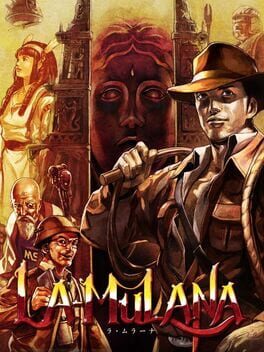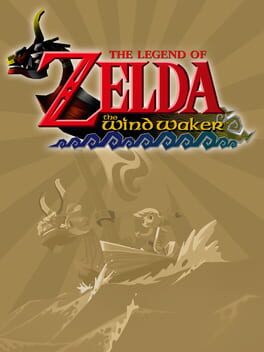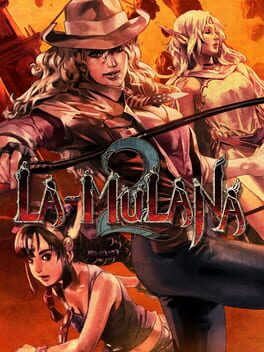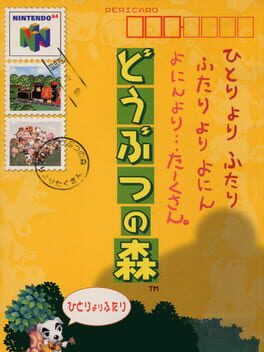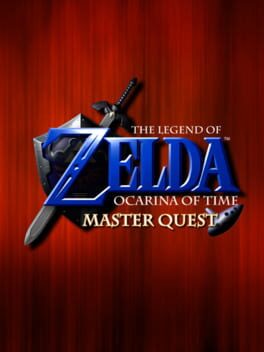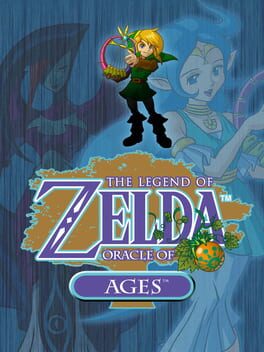Ramonium
Bio
Journalist. Videogame lover. Founder of Smash Bros. Mallorca.
Journalist. Videogame lover. Founder of Smash Bros. Mallorca.
Badges

GOTY '23
Participated in the 2023 Game of the Year Event

Best Friends
Become mutual friends with at least 3 others

GOTY '22
Participated in the 2022 Game of the Year Event

3 Years of Service
Being part of the Backloggd community for 3 years

GOTY '21
Participated in the 2021 Game of the Year Event

Elite Gamer
Played 500+ games

Noticed
Gained 3+ followers

Gamer
Played 250+ games

N00b
Played 100+ games
Favorite Games
616
Total Games Played
014
Played in 2024
104
Games Backloggd
Recently Played See More
Recently Reviewed See More
First of all, it should be made clear that La-Mulana is not a game for everyone. Its level of difficulty is enormous, extremely high, only affordable for people not only with great skill, but (and this is the most important) with observation abilities, intelligence and perseverance. La-Mulana demands much more from the player than other video games: like a good Indiana Jones-style archaeologist, the user must not only be able to defeat enemies, overcome fights and overcome platforming challenges, but must also be able to think.
Some of the most cryptic puzzles in video game history can be found in La-Mulana. I am talking about puzzles so enigmatic and difficult that they manage to surpass some of the most complicated ones that have been seen in the most infernal classic point and click adventure games. Why does this happen? Because La-Mulana achieves what it sets out to do: it turns the user into a real archaeologist.
Often, a pencil and a notebook will be our best (essential) allies to write down the different clues and clues that are scattered throughout the ruins. For the player to be able to successfully complete this title, he or she will have to dedicate many hours to the enigmas, and this is one of the things that makes La-Mulana great: we have to take it not as a video game, but as our job: we are archaeologists and we are exploring ancient ruins, and thats all. In fact, the laptop that Professor Lemeza carries on his back (an MSX) allows us to install various applications that have essential utilities in the ruins, such as helping us to decipher hieroglyphs or visualize maps, for example.
The gameplay, in fact, will develop even when the console is turned off. We will try to decipher the puzzles in front of our notebook, we will think about them during the lunchtime and we will even get up in the middle of the night to turn on the game because the solution to a puzzle has suddenly occurred to us. And the best thing is that although almost all the puzzles are very difficult (I put special emphasis on this), they are never impossible to solve without outside help. They all make sense, and in all cases sufficient clues are offered and the player can always reach their solution without the need to resort to guides. In fact, although in a lot of forums you can read that it is impossible to beat La-Mulana without guides, I insist that this is completely false (and I can vouch for it). The game is very complicated, but it is never unfair and the solutions can always be reached. It requires a lot of thinking outside the box and the puzzles are a far cry from what we're used to in video games (all that experience in titles like Zelda is useless here), but that's not a problem at all: everything makes sense and the developers are never unfair.
The ruins are huge, gigantic, and as we are facing a metroidvania, we will have to take many detours and explore numerous rooms, especially considering that here it will be necessary on more than one occasion to review the clues of the first areas to solve certain puzzles. Not only is the background of the game scattered throughout the ruins in the form of stone tablets and we will have to pay attention to their engravings to understand it (as in Metroid Prime), but La-Mulana works as a whole. Solving an enigma in an area at the beginning can serve to open a path in one at the end and vice versa. Likewise, a clue from the entrance can be essential to solve a mystery from the depths of the ruins.
The title is inspired by Super Metroid when it comes to outlining the exploration: given that Professor Lemeza's equipment was requisitioned at the airport (an absolute nod to the genre), we will have to find objects in the ruins to help us access new areas, become more powerful or defeat certain types of enemies. As in the Super Nintendo classic, the items help us to access new paths that in turn lead us to other puzzles.
That leads us to think that La-Mulana is perhaps one of the most difficult video games of all time: it not only requires skill and exploration skills, but also a good brain to overcome its cryptic enigmas. The feeling that we are always stuck never leaves us, but that leads us to be forced to reason to overcome the puzzles. However, the game punishes the player a lot for not being skilled or smart enough, but also rewards him for doing things right: and is that, as good archaeologists, we must be attentive to the traps of the game, because if we solve a puzzle wrong, we will suffer the consequences by dying or suffering damage. However, the 99% of these tricks can be predicted: if we stop and think before acting, after having studied the environment well, like good archaeologists, we will not fall into the traps and we will overcome each enigma that is put in front of us successfully.
All this makes it perhaps one of the most hardcore titles on the market. The player is alone in front of the "greatest mystery in the history of mankind", which as a good archaeologist will have to discover and solve. For this reason there are great references to the mythology of numerous civilizations, all after an excellent documentation work by the developers.
La-Mulana, moreover, exploits like few others the concept of absolute open world in 2D: since there are so many parts open from the beginning, every run is different and every user will get stuck on different things. There is no fixed thread: the important thing is to get to the end and discover the secrets. The order in which we do it and the form is the least important thing.
If you are looking for a title that challenges you to the maximum, in which you are the absolute protagonist and that absorbs you like few others, you must try La-Mulana. However, its difficulty is not suitable for everyone. It is only focused on users with intelligence and the desire to enjoy an unforgettable adventure.
/////////
Antes de nada, hay que dejar claro que La-Mulana no es un juego para todo el mundo. Su nivel de dificultad es enorme, extremadamente elevado, solo asequible para personas no solo con una gran habilidad, sino (y esto es lo más importante) con capacidad de observación, inteligencia y perseverancia. La-Mulana exige al jugador mucho más que los demás videojuegos: al igual que un buen arqueólogo al estilo de Indiana Jones, el usuario no solo ha de ser capaz de derrotar enemigos, superar peleas y superar desafíos plataformeros, sino que ha de saber pensar.
Algunos de los enigmas más crípticos de la historia de los videojuegos pueden encontrarse en La-Mulana. Hablamos de rompecabezas tan enigmáticos y difíciles que logran superar a algunos de los más complicados que se han visto en las aventuras gráficas clásicas más infernales. ¿Por qué ocurre esto? Porque La-Mulana consigue lo que se propone: convierte al usuario en un arqueólogo de verdad.
A menudo, un lápiz y un cuaderno serán nuestros mejores (esenciales) aliados para anotar las diferentes pistas e indicios que hay repartidos por todas las ruinas. Para que el jugador logre superar con éxito este título, tendrá que dedicarle muchas horas a los enigmas, y esta es una de las cosas que hacen a La-Mulana grandioso: hay que tomárselo no como un videojuego, sino como nuestro trabajo: somos arqueólogos y estamos explorando unas ruinas antiguas, con todo lo que eso conlleva. De hecho, el ordenador portátil que el profesor Lemeza lleva a cuestas (un MSX) nos permite instalar diversas aplicaciones que tienen utilidades imprescindibles en las ruinas, como ayudarnos a descifrar los jeroglíficos o visualizar mapas, por ejemplo.
La jugabilidad, de hecho, se desarrollará incluso cuando la consola esté apagada. Intentaremos descifrar los enigmas delante de nuestra libreta, pensaremos en ellos durante la hora de comer e incluso nos levantaremos en mitad de la noche a encender el juego porque se nos habrá ocurrido la solución a un puzle de repente. Y lo mejor es que aunque casi todos los enigmas sean muy difíciles (pongo especial hincapié en ello), nunca son imposibles de resolver sin ayuda externa. Todos tienen sentido, en todos los casos se ofrecen pistas suficientes y el jugador siempre puede alcanzar su solución sin la necesidad de recurrir a guías. Que de hecho, aunque en un montón de foros podáis leer que es imposible superar La-Mulana sin guías, insisto en que eso es completamente falso (y puedo dar fe de ello). El juego es muy complicado, pero jamás es injusto y las soluciones siempre pueden alcanzarse. Requiere pensar mucho fuera de la caja y los enigmas se alejan un montón de a lo que estamos acostumbrados en los videojuegos (toda esa experiencia en títulos como Zelda no sirve aquí de nada), pero eso no es problema alguno: todo tiene sentido y los desarrolladores nunca son injustos.
Las ruinas son enormes, gigantes, y como estamos ante un metroidvania, tendremos que dar muchos rodeos y explorar numerosas estancias, más teniendo en cuenta que aquí hará falta en más de una ocasión revisar las pistas de las primeras zonas para resolver ciertos puzles. Y es que no solo el trasfondo del juego está desperdigado por todas las ruinas en forma de tablillas y tendremos que prestarle atención a sus grabados para entenderla (como ocurre con Metroid Prime), sino que La-Mulana funciona como un todo. Resolver un enigma en una zona del principio puede servir para abrir un camino en una del final y viceversa. De la misma forma, una pista de la entrada puede ser esencial para resolver un misterio de las profundidades de las ruinas.
El título se inspira en Super Metroid a la hora de esquematizar la exploración: dado que al profesor Lemeza le requisaron el equipo en el aeropuerto (guiño absoluto al género), nos las tendremos que ingeniar para encontrar objetos en las ruinas que nos ayuden a acceder a nuevas áreas, ser más poderosos o derrotar a ciertos tipos de enemigos. Como ocurre en el clásico de Super Nintendo, los ítems nos ayudan a acceder a caminos nuevos que a su vez nos llevan a otros puzles.
Eso lleva a pensar que La-Mulana quizá sea uno de los videojuegos más difíciles de todos los tiempos: no solo exige habilidad y dotes de exploración, sino un buen cerebro para superar sus crípticos enigmas. La sensación de que siempre estamos atascados nunca nos abandona, pero eso lleva a que nos veamos obligados a razonar para superar los puzles. Sin embargo, el juego castiga mucho al jugador por no ser lo suficientemente hábil o listo, pero también lo premia por hacer las cosas bien: y es que, como buenos arqueólogos, hemos de estar atentos a las trampas del juego, ya que si resolvemos mal un puzle, sufriremos las consecuencias muriendo o sufriendo daños. Sin embargo, el 99% de esos trucos se pueden predecir: si nos paramos a pensar y a reflexionar antes de actuar, tras haber estudiado bien el entorno, como buenos arqueólogos, no caeremos en las trampas y superaremos cada enigma que se nos ponga por delante con éxito.
Todo esto lleva a que quizá sea uno de los títulos más hardcore del mercado. Está el jugador solo frente al "mayor misterio de la historia de la Humanidad", que como buen arqueólogo tendrá que descubrir y resolver. Por esa razón hay grandes referencias a la mitología de numerosas civilizaciones, todo tras un excelente trabajo de documentación por parte de los desarrolladores.
La-Mulana, además, explota como pocos el concepto de mundo abierto absoluto en el 2D: dado que hay tantas partes abiertas desde el principio, cada partida es diferente y cada usuario se atascará en cosas distintas. No hay ningún tipo de hilo fijado: lo importante es llegar hasta el final y descubrir los secretos. El orden en el que lo hagamos y la forma es lo de menos.
Si buscas un título que te rete al máximo, en el que seas el absoluto protagonista y que te absorba como pocos, debes probar La-Mulana. Sin embargo, su dificultad no es apta para todo el mundo. Está enfocado solo para usuarios con inteligencia y ganas de disfrutar de una inolvidable aventura.
Some of the most cryptic puzzles in video game history can be found in La-Mulana. I am talking about puzzles so enigmatic and difficult that they manage to surpass some of the most complicated ones that have been seen in the most infernal classic point and click adventure games. Why does this happen? Because La-Mulana achieves what it sets out to do: it turns the user into a real archaeologist.
Often, a pencil and a notebook will be our best (essential) allies to write down the different clues and clues that are scattered throughout the ruins. For the player to be able to successfully complete this title, he or she will have to dedicate many hours to the enigmas, and this is one of the things that makes La-Mulana great: we have to take it not as a video game, but as our job: we are archaeologists and we are exploring ancient ruins, and thats all. In fact, the laptop that Professor Lemeza carries on his back (an MSX) allows us to install various applications that have essential utilities in the ruins, such as helping us to decipher hieroglyphs or visualize maps, for example.
The gameplay, in fact, will develop even when the console is turned off. We will try to decipher the puzzles in front of our notebook, we will think about them during the lunchtime and we will even get up in the middle of the night to turn on the game because the solution to a puzzle has suddenly occurred to us. And the best thing is that although almost all the puzzles are very difficult (I put special emphasis on this), they are never impossible to solve without outside help. They all make sense, and in all cases sufficient clues are offered and the player can always reach their solution without the need to resort to guides. In fact, although in a lot of forums you can read that it is impossible to beat La-Mulana without guides, I insist that this is completely false (and I can vouch for it). The game is very complicated, but it is never unfair and the solutions can always be reached. It requires a lot of thinking outside the box and the puzzles are a far cry from what we're used to in video games (all that experience in titles like Zelda is useless here), but that's not a problem at all: everything makes sense and the developers are never unfair.
The ruins are huge, gigantic, and as we are facing a metroidvania, we will have to take many detours and explore numerous rooms, especially considering that here it will be necessary on more than one occasion to review the clues of the first areas to solve certain puzzles. Not only is the background of the game scattered throughout the ruins in the form of stone tablets and we will have to pay attention to their engravings to understand it (as in Metroid Prime), but La-Mulana works as a whole. Solving an enigma in an area at the beginning can serve to open a path in one at the end and vice versa. Likewise, a clue from the entrance can be essential to solve a mystery from the depths of the ruins.
The title is inspired by Super Metroid when it comes to outlining the exploration: given that Professor Lemeza's equipment was requisitioned at the airport (an absolute nod to the genre), we will have to find objects in the ruins to help us access new areas, become more powerful or defeat certain types of enemies. As in the Super Nintendo classic, the items help us to access new paths that in turn lead us to other puzzles.
That leads us to think that La-Mulana is perhaps one of the most difficult video games of all time: it not only requires skill and exploration skills, but also a good brain to overcome its cryptic enigmas. The feeling that we are always stuck never leaves us, but that leads us to be forced to reason to overcome the puzzles. However, the game punishes the player a lot for not being skilled or smart enough, but also rewards him for doing things right: and is that, as good archaeologists, we must be attentive to the traps of the game, because if we solve a puzzle wrong, we will suffer the consequences by dying or suffering damage. However, the 99% of these tricks can be predicted: if we stop and think before acting, after having studied the environment well, like good archaeologists, we will not fall into the traps and we will overcome each enigma that is put in front of us successfully.
All this makes it perhaps one of the most hardcore titles on the market. The player is alone in front of the "greatest mystery in the history of mankind", which as a good archaeologist will have to discover and solve. For this reason there are great references to the mythology of numerous civilizations, all after an excellent documentation work by the developers.
La-Mulana, moreover, exploits like few others the concept of absolute open world in 2D: since there are so many parts open from the beginning, every run is different and every user will get stuck on different things. There is no fixed thread: the important thing is to get to the end and discover the secrets. The order in which we do it and the form is the least important thing.
If you are looking for a title that challenges you to the maximum, in which you are the absolute protagonist and that absorbs you like few others, you must try La-Mulana. However, its difficulty is not suitable for everyone. It is only focused on users with intelligence and the desire to enjoy an unforgettable adventure.
/////////
Antes de nada, hay que dejar claro que La-Mulana no es un juego para todo el mundo. Su nivel de dificultad es enorme, extremadamente elevado, solo asequible para personas no solo con una gran habilidad, sino (y esto es lo más importante) con capacidad de observación, inteligencia y perseverancia. La-Mulana exige al jugador mucho más que los demás videojuegos: al igual que un buen arqueólogo al estilo de Indiana Jones, el usuario no solo ha de ser capaz de derrotar enemigos, superar peleas y superar desafíos plataformeros, sino que ha de saber pensar.
Algunos de los enigmas más crípticos de la historia de los videojuegos pueden encontrarse en La-Mulana. Hablamos de rompecabezas tan enigmáticos y difíciles que logran superar a algunos de los más complicados que se han visto en las aventuras gráficas clásicas más infernales. ¿Por qué ocurre esto? Porque La-Mulana consigue lo que se propone: convierte al usuario en un arqueólogo de verdad.
A menudo, un lápiz y un cuaderno serán nuestros mejores (esenciales) aliados para anotar las diferentes pistas e indicios que hay repartidos por todas las ruinas. Para que el jugador logre superar con éxito este título, tendrá que dedicarle muchas horas a los enigmas, y esta es una de las cosas que hacen a La-Mulana grandioso: hay que tomárselo no como un videojuego, sino como nuestro trabajo: somos arqueólogos y estamos explorando unas ruinas antiguas, con todo lo que eso conlleva. De hecho, el ordenador portátil que el profesor Lemeza lleva a cuestas (un MSX) nos permite instalar diversas aplicaciones que tienen utilidades imprescindibles en las ruinas, como ayudarnos a descifrar los jeroglíficos o visualizar mapas, por ejemplo.
La jugabilidad, de hecho, se desarrollará incluso cuando la consola esté apagada. Intentaremos descifrar los enigmas delante de nuestra libreta, pensaremos en ellos durante la hora de comer e incluso nos levantaremos en mitad de la noche a encender el juego porque se nos habrá ocurrido la solución a un puzle de repente. Y lo mejor es que aunque casi todos los enigmas sean muy difíciles (pongo especial hincapié en ello), nunca son imposibles de resolver sin ayuda externa. Todos tienen sentido, en todos los casos se ofrecen pistas suficientes y el jugador siempre puede alcanzar su solución sin la necesidad de recurrir a guías. Que de hecho, aunque en un montón de foros podáis leer que es imposible superar La-Mulana sin guías, insisto en que eso es completamente falso (y puedo dar fe de ello). El juego es muy complicado, pero jamás es injusto y las soluciones siempre pueden alcanzarse. Requiere pensar mucho fuera de la caja y los enigmas se alejan un montón de a lo que estamos acostumbrados en los videojuegos (toda esa experiencia en títulos como Zelda no sirve aquí de nada), pero eso no es problema alguno: todo tiene sentido y los desarrolladores nunca son injustos.
Las ruinas son enormes, gigantes, y como estamos ante un metroidvania, tendremos que dar muchos rodeos y explorar numerosas estancias, más teniendo en cuenta que aquí hará falta en más de una ocasión revisar las pistas de las primeras zonas para resolver ciertos puzles. Y es que no solo el trasfondo del juego está desperdigado por todas las ruinas en forma de tablillas y tendremos que prestarle atención a sus grabados para entenderla (como ocurre con Metroid Prime), sino que La-Mulana funciona como un todo. Resolver un enigma en una zona del principio puede servir para abrir un camino en una del final y viceversa. De la misma forma, una pista de la entrada puede ser esencial para resolver un misterio de las profundidades de las ruinas.
El título se inspira en Super Metroid a la hora de esquematizar la exploración: dado que al profesor Lemeza le requisaron el equipo en el aeropuerto (guiño absoluto al género), nos las tendremos que ingeniar para encontrar objetos en las ruinas que nos ayuden a acceder a nuevas áreas, ser más poderosos o derrotar a ciertos tipos de enemigos. Como ocurre en el clásico de Super Nintendo, los ítems nos ayudan a acceder a caminos nuevos que a su vez nos llevan a otros puzles.
Eso lleva a pensar que La-Mulana quizá sea uno de los videojuegos más difíciles de todos los tiempos: no solo exige habilidad y dotes de exploración, sino un buen cerebro para superar sus crípticos enigmas. La sensación de que siempre estamos atascados nunca nos abandona, pero eso lleva a que nos veamos obligados a razonar para superar los puzles. Sin embargo, el juego castiga mucho al jugador por no ser lo suficientemente hábil o listo, pero también lo premia por hacer las cosas bien: y es que, como buenos arqueólogos, hemos de estar atentos a las trampas del juego, ya que si resolvemos mal un puzle, sufriremos las consecuencias muriendo o sufriendo daños. Sin embargo, el 99% de esos trucos se pueden predecir: si nos paramos a pensar y a reflexionar antes de actuar, tras haber estudiado bien el entorno, como buenos arqueólogos, no caeremos en las trampas y superaremos cada enigma que se nos ponga por delante con éxito.
Todo esto lleva a que quizá sea uno de los títulos más hardcore del mercado. Está el jugador solo frente al "mayor misterio de la historia de la Humanidad", que como buen arqueólogo tendrá que descubrir y resolver. Por esa razón hay grandes referencias a la mitología de numerosas civilizaciones, todo tras un excelente trabajo de documentación por parte de los desarrolladores.
La-Mulana, además, explota como pocos el concepto de mundo abierto absoluto en el 2D: dado que hay tantas partes abiertas desde el principio, cada partida es diferente y cada usuario se atascará en cosas distintas. No hay ningún tipo de hilo fijado: lo importante es llegar hasta el final y descubrir los secretos. El orden en el que lo hagamos y la forma es lo de menos.
Si buscas un título que te rete al máximo, en el que seas el absoluto protagonista y que te absorba como pocos, debes probar La-Mulana. Sin embargo, su dificultad no es apta para todo el mundo. Está enfocado solo para usuarios con inteligencia y ganas de disfrutar de una inolvidable aventura.
Don't let Super Smash Bros. Ultimate make you think that Super Smash Bros. for Wii U isn't worth playing in 2022: it's still a very complete and fun video game. It includes some very interesting competitive mechanics of its own and some unique features.
As is the case with its sister version released for 3DS, the Wii U version of Super Smash Bros. 4 delivers what it promises: it's a complete, fun fighting game that can be both competitive and a really nice party game.
The roster of fighters is exceptional and offers a gigantic amount of hours of gameplay incomparable to what any other Wii U title can currently offer. This work is absolutely essential for any owner of the console, because getting the most out of it is easy for any player of all profiles.
However, from the point of view of the single player, the absence of the story mode cannot be justified in any way. More than a few people wonder if the Nintendo 3DS edition was really necessary, because on a second thought... if that portable version had not existed, this work released for the Wii U would have been much more complete. Masahiro Sakurai's obsession with detail has been split into two games, so unfortunately to enjoy the full Smash experience of this generation you have to spend time with both versions. Undoubtedly, this is the better one, but it still hurts to think that it is not as good as it could have been because of the double development and the lack of time granted by Nintendo.
/////////
Que Super Smash Bros. Ultimate no te haga pensar que no merece la pena jugar a Super Smash Bros. for Wii U en 2022: sigue siendo un videojuego muy completo y divertido. Incluye algunas mecánicas competitivas propias muy interesantes y algunas características únicas.
Al igual que como ocurre con su hermana lanzada para 3DS, la versión de Wii U de Super Smash Bros. 4 cumple con lo que promete: es un juego de lucha completo, divertido y que puede ser tanto competitivo como una verdadera locura.
El plantel de luchadores es excepcional y ofrece una cantidad de horas de juego gigantesca e incomparables a las que cualquier otro título de Wii U puede ofrecer actualmente. Esta obra es totalmente imprescindible para todo poseedor de la máquina, porque sacarle partido es fácil para cualquier jugador de todo tipo de perfil.
Sin embargo, poniéndonos en el punto de vista del jugador individual, la ausencia del modo Historia no puede justificarse de ninguna forma. Más de uno se plantea si realmente la edición de Nintendo 3DS era necesaria, porque pensándolo bien... si esa versión portátil no hubiese existido, esta obra lanzada para la máquina de sobremesa habría sido mucho más completa. La obsesión por el detalle de Masahiro Sakurai se ha dividido en dos juegos, por lo que lamentablemente para disfrutar de la experiencia Smash al completo de esta generación haya que dedicarle tiempo a las dos versiones. Indudablemente, esta es la mejor, pero sigue doliendo pensar que no es tan buena como podría haber sido por el desarrollo doble y la falta de tiempo concedido por Nintendo.
As is the case with its sister version released for 3DS, the Wii U version of Super Smash Bros. 4 delivers what it promises: it's a complete, fun fighting game that can be both competitive and a really nice party game.
The roster of fighters is exceptional and offers a gigantic amount of hours of gameplay incomparable to what any other Wii U title can currently offer. This work is absolutely essential for any owner of the console, because getting the most out of it is easy for any player of all profiles.
However, from the point of view of the single player, the absence of the story mode cannot be justified in any way. More than a few people wonder if the Nintendo 3DS edition was really necessary, because on a second thought... if that portable version had not existed, this work released for the Wii U would have been much more complete. Masahiro Sakurai's obsession with detail has been split into two games, so unfortunately to enjoy the full Smash experience of this generation you have to spend time with both versions. Undoubtedly, this is the better one, but it still hurts to think that it is not as good as it could have been because of the double development and the lack of time granted by Nintendo.
/////////
Que Super Smash Bros. Ultimate no te haga pensar que no merece la pena jugar a Super Smash Bros. for Wii U en 2022: sigue siendo un videojuego muy completo y divertido. Incluye algunas mecánicas competitivas propias muy interesantes y algunas características únicas.
Al igual que como ocurre con su hermana lanzada para 3DS, la versión de Wii U de Super Smash Bros. 4 cumple con lo que promete: es un juego de lucha completo, divertido y que puede ser tanto competitivo como una verdadera locura.
El plantel de luchadores es excepcional y ofrece una cantidad de horas de juego gigantesca e incomparables a las que cualquier otro título de Wii U puede ofrecer actualmente. Esta obra es totalmente imprescindible para todo poseedor de la máquina, porque sacarle partido es fácil para cualquier jugador de todo tipo de perfil.
Sin embargo, poniéndonos en el punto de vista del jugador individual, la ausencia del modo Historia no puede justificarse de ninguna forma. Más de uno se plantea si realmente la edición de Nintendo 3DS era necesaria, porque pensándolo bien... si esa versión portátil no hubiese existido, esta obra lanzada para la máquina de sobremesa habría sido mucho más completa. La obsesión por el detalle de Masahiro Sakurai se ha dividido en dos juegos, por lo que lamentablemente para disfrutar de la experiencia Smash al completo de esta generación haya que dedicarle tiempo a las dos versiones. Indudablemente, esta es la mejor, pero sigue doliendo pensar que no es tan buena como podría haber sido por el desarrollo doble y la falta de tiempo concedido por Nintendo.
The Legend of Zelda: The Wind Waker is a true masterpiece and the best Nintendo GameCube game, a title that in its place maybe could have the also incredible Metroid Prime.
Everything in Wind Waker exudes the aroma of a great game: a unique and groundbreaking graphic style, a fantastic soundtrack, a brutal addictiveness and an innovative and fun gameplay scheme. Some Zelda fans may not like the graphic style, but that is no excuse for not enjoying this title, especially because a person who had a good time with the previous ones will also enjoy this one.
Wind Waker has as its main feature the continuous presence of the ocean: throughout the game we will not see a single continent or large island, and our entire adventure will take place on little island and the wide sea. This ocean is totally alive, full of elements of all kinds and we will never know what we will find. The nautical chart is divided into fifty huge squares, and each one has its own island or archipelago of islets, and each part of the navigation map is unique. While navigating we will encounter all kinds of elements, be they watchtowers, ships, submarines, monsters, islets... We will continually see distant points on our way, and the first thing we will ask ourselves is: what will be on that islet? what will that be? what will I find on that watchtower? Only if we want to, we will be able to disembark on them and see it for ourselves.
Thus, it can be said that Wind Waker is the only title in the series that really makes us become adventurers. Elements such as the map and compass, which in other titles were not so important, become essential when we sail the ocean.
The system of moving around with a boat, despite seeming like a far-fetched idea, works perfectly: we will never get tired of exploring in this way. Using our Wind Waker, we can control the direction of the wind at will to take advantage of it with our sail. The controls of the ship are simple and intuitive. All this manages to make Wind Waker cause the player the most accomplished feeling of adventure in the entire saga: the freedom is greater than in any other Zelda (with the exception of Breath of the Wild). However, that may make it too different from other titles in the series for some players, especially for those who do not want to get lost and complete side quests. Wind Waker must be played with a different point of view to be enjoyed to the fullest: the mentality should not be to "finish the dungeons", but to explore.
There are no perfect games, but there are some that come close to being perfect, and Zelda Wind Waker is certainly one of them. Different from other titles in the series but without altering the basics, Nintendo has shown with this work (for the umpteenth time) that it is always possible to reinvent itself and do something different and innovative. If there are titles that justify the purchase of a console, Wind Waker is probably the one that does that with Nintendo GameCube. Recommended to any fan of Zelda and videogames in general.
/////////
The Legend of Zelda: The Wind Waker es una verdadera obra maestra y el mejor juego de Nintendo GameCube, título que en su lugar quizá, solo quizá, podría tener el también increíble Metroid Prime.
Todo en Wind Waker destila aroma a juegazo: un estilo gráfico único y rompedor, una banda sonora fantástica, una capacidad de adicción brutal y un esquema jugable innovador y divertido. Puede no gustar el estilo gráfico a algunos fans de Zelda, pero eso no es excusa para no disfrutar este título, sobre todo porque una persona que se lo pasó bien con los anteriores también lo hará con este.
Wind Waker tiene como característica principal la presencia continua del océano: en todo el juego no veremos ni un solo continente o isla grande, y toda nuestra aventura se desarrollará en islotes y el ancho mar. Dicho océano está totalmente vivo, lleno de elementos de todo tipo y nunca sabremos qué nos encontraremos. La carta náutica está dividida en cincuenta cuadrados enormes, y cada uno tiene su isla o archipiélago de islotes, y cada parte de dicho mapa de navegación es única. Mientras naveguemos nos encontraremos con elementos de todo tipo, ya sean atalayas, barcos, submarinos, monstruos, islotes... Continuamente veremos puntos alejados en nuestro camino, y lo primero que nos preguntaremos será: ¿qué habrá en aquel islote? ¿qué será eso? ¿qué me encontraré en esa atalaya? Solo si queremos, podremos desembarcar en ellos y verlo por nosotros mismos.
Así, puede decirse que Wind Waker es el único título de la saga que realmente nos hace convertirnos en aventureros. Elementos como el mapa y la brújula, que en otros títulos no tenían tanta importancia, se convierten en algo imprescindible cuando surquemos el océano.
El sistema de desplazamiento con barco, a pesar de parecer una idea rebuscada, funciona a la perfección: nunca nos cansaremos de explorar de este modo. Utilizando nuestra Batuta de los Vientos, podremos controlar la dirección del viento a nuestro antojo para poder aprovecharlo con nuestra vela. Los controles del barco son sencillos e intuitivos. Todo esto logra que Wind Waker cause en el jugador el sentimiento de aventura más logrado en toda la saga: la libertad es más grande que en ningún otro Zelda (con la excepción de Breath of the Wild). Sin embargo, eso puede hacerlo demasiado diferente a otros títulos de la saga para algunos jugadores, sobre todo para aquellos que no desean perderse y completar misiones secundarias. Wind Waker debe jugarse con otro punto de vista para que pueda disfrutarse al máximo: la mentalidad no debe ser de "terminar las mazmorras", sino de explorar.
No hay juegos perfectos, pero sí algunos que se acercan a esa denominación, y, sin duda, Zelda Wind Waker es uno de ellos. Diferente a otros títulos de la saga pero sin alterar las bases, Nintendo ha demostrado con esta obra (por enésima vez) que siempre es posible reinventarse y hacer algo distinto e innovador. Si hay títulos que justifican la compra de una consola, probablemente Wind Waker sea el que hace eso con Nintendo GameCube. Recomendado a todo fan de Zelda y de los videojuegos en general.
Everything in Wind Waker exudes the aroma of a great game: a unique and groundbreaking graphic style, a fantastic soundtrack, a brutal addictiveness and an innovative and fun gameplay scheme. Some Zelda fans may not like the graphic style, but that is no excuse for not enjoying this title, especially because a person who had a good time with the previous ones will also enjoy this one.
Wind Waker has as its main feature the continuous presence of the ocean: throughout the game we will not see a single continent or large island, and our entire adventure will take place on little island and the wide sea. This ocean is totally alive, full of elements of all kinds and we will never know what we will find. The nautical chart is divided into fifty huge squares, and each one has its own island or archipelago of islets, and each part of the navigation map is unique. While navigating we will encounter all kinds of elements, be they watchtowers, ships, submarines, monsters, islets... We will continually see distant points on our way, and the first thing we will ask ourselves is: what will be on that islet? what will that be? what will I find on that watchtower? Only if we want to, we will be able to disembark on them and see it for ourselves.
Thus, it can be said that Wind Waker is the only title in the series that really makes us become adventurers. Elements such as the map and compass, which in other titles were not so important, become essential when we sail the ocean.
The system of moving around with a boat, despite seeming like a far-fetched idea, works perfectly: we will never get tired of exploring in this way. Using our Wind Waker, we can control the direction of the wind at will to take advantage of it with our sail. The controls of the ship are simple and intuitive. All this manages to make Wind Waker cause the player the most accomplished feeling of adventure in the entire saga: the freedom is greater than in any other Zelda (with the exception of Breath of the Wild). However, that may make it too different from other titles in the series for some players, especially for those who do not want to get lost and complete side quests. Wind Waker must be played with a different point of view to be enjoyed to the fullest: the mentality should not be to "finish the dungeons", but to explore.
There are no perfect games, but there are some that come close to being perfect, and Zelda Wind Waker is certainly one of them. Different from other titles in the series but without altering the basics, Nintendo has shown with this work (for the umpteenth time) that it is always possible to reinvent itself and do something different and innovative. If there are titles that justify the purchase of a console, Wind Waker is probably the one that does that with Nintendo GameCube. Recommended to any fan of Zelda and videogames in general.
/////////
The Legend of Zelda: The Wind Waker es una verdadera obra maestra y el mejor juego de Nintendo GameCube, título que en su lugar quizá, solo quizá, podría tener el también increíble Metroid Prime.
Todo en Wind Waker destila aroma a juegazo: un estilo gráfico único y rompedor, una banda sonora fantástica, una capacidad de adicción brutal y un esquema jugable innovador y divertido. Puede no gustar el estilo gráfico a algunos fans de Zelda, pero eso no es excusa para no disfrutar este título, sobre todo porque una persona que se lo pasó bien con los anteriores también lo hará con este.
Wind Waker tiene como característica principal la presencia continua del océano: en todo el juego no veremos ni un solo continente o isla grande, y toda nuestra aventura se desarrollará en islotes y el ancho mar. Dicho océano está totalmente vivo, lleno de elementos de todo tipo y nunca sabremos qué nos encontraremos. La carta náutica está dividida en cincuenta cuadrados enormes, y cada uno tiene su isla o archipiélago de islotes, y cada parte de dicho mapa de navegación es única. Mientras naveguemos nos encontraremos con elementos de todo tipo, ya sean atalayas, barcos, submarinos, monstruos, islotes... Continuamente veremos puntos alejados en nuestro camino, y lo primero que nos preguntaremos será: ¿qué habrá en aquel islote? ¿qué será eso? ¿qué me encontraré en esa atalaya? Solo si queremos, podremos desembarcar en ellos y verlo por nosotros mismos.
Así, puede decirse que Wind Waker es el único título de la saga que realmente nos hace convertirnos en aventureros. Elementos como el mapa y la brújula, que en otros títulos no tenían tanta importancia, se convierten en algo imprescindible cuando surquemos el océano.
El sistema de desplazamiento con barco, a pesar de parecer una idea rebuscada, funciona a la perfección: nunca nos cansaremos de explorar de este modo. Utilizando nuestra Batuta de los Vientos, podremos controlar la dirección del viento a nuestro antojo para poder aprovecharlo con nuestra vela. Los controles del barco son sencillos e intuitivos. Todo esto logra que Wind Waker cause en el jugador el sentimiento de aventura más logrado en toda la saga: la libertad es más grande que en ningún otro Zelda (con la excepción de Breath of the Wild). Sin embargo, eso puede hacerlo demasiado diferente a otros títulos de la saga para algunos jugadores, sobre todo para aquellos que no desean perderse y completar misiones secundarias. Wind Waker debe jugarse con otro punto de vista para que pueda disfrutarse al máximo: la mentalidad no debe ser de "terminar las mazmorras", sino de explorar.
No hay juegos perfectos, pero sí algunos que se acercan a esa denominación, y, sin duda, Zelda Wind Waker es uno de ellos. Diferente a otros títulos de la saga pero sin alterar las bases, Nintendo ha demostrado con esta obra (por enésima vez) que siempre es posible reinventarse y hacer algo distinto e innovador. Si hay títulos que justifican la compra de una consola, probablemente Wind Waker sea el que hace eso con Nintendo GameCube. Recomendado a todo fan de Zelda y de los videojuegos en general.

